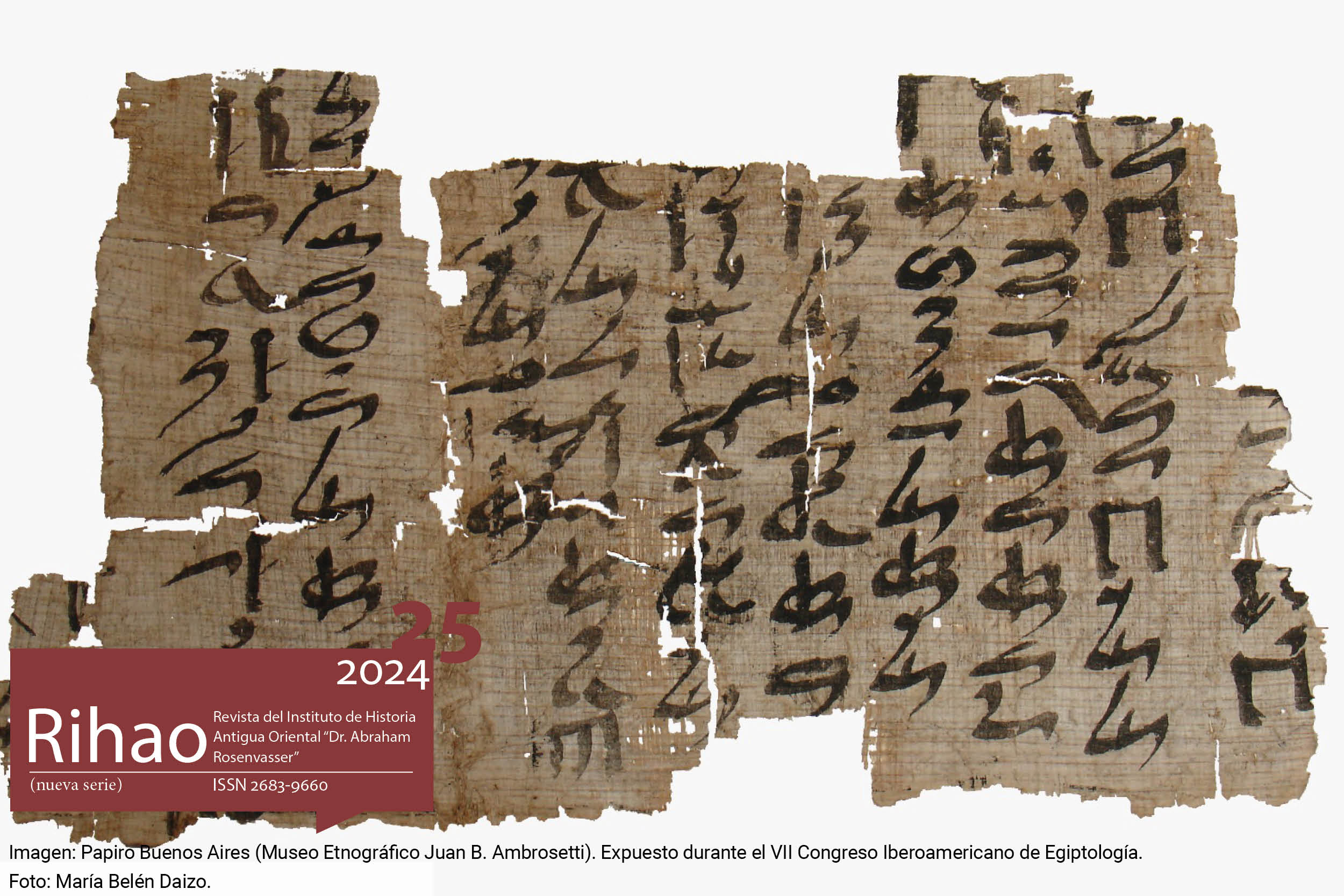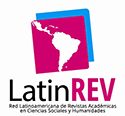The statue of Nakht’s tomb (TT52): Its finding, hymn, and Re’s forms
Abstract
The statue of Nakht was located in a niche in the inner chamber of a tomb belonging to a scribe and astronomer of the god Amun, which was situated on western Thebes, current Luxor. This statue is one of the objects found in the tomb. It is 40cm high, and depicts a kneeling man hol-ding a stele. When categorizing this object, we see that it belongs to the stelophor type, which is based on a religious context that unites the concepts of statue, stele and false door. In this article we intend to analyze the statue of Nakht from the perspective of the Material Engagement Theory, proposed by Lambros Malafouris, elucidating its position in the tomb, its form and its text. Thus, we will develop an idea of what this object could symbolize within Egyptian belief.Downloads
References
Assmann, J. (1971). Zwei Sonnenhymnen der späten XVIII. Dynastie in thebanischen Gräbern der Saitenzeit, in: Mitteilungen des Deutschen Archäologischen Instituts, Abteilung Kairo 27 (1): 1-33.
Assmann, J. (1983). Sonnenhymnen in thebanischen Gräbern. Mainz: Philipp von Zabern.
Assmann, J. (1995). Egyptian Solar Religion in the New Kingdom: Re, Amun and the Crisis of Polytheism. Londres: Kegan Paul International.
Assmann, J. (1999). Ägyptische Hymnen und Gebete. Übersetzt, kommentiert und eingeleitet. Friburgo / Gotinga: Universitätsverlag / Vandenhoeck & Ruprecht.
Assmann, J. (2003a). Mort e au-delà dans l’Égypte ancienne. Paris: Rocher.
Assmann, J. (2003b). The Ramesside Tomb and the Construction of Sacred Space, in: Strudwick, N. e Taylor, J. (eds.), The Theban Necropolis: Past, Present and Future. Londres: British Museum Press, 46-52.
Assmann, J. (2016). Egipto a la luz de una teoria pluralista de la cultura. Madrid: Akal.
Baines, J. (2007). Visual & Written Culture in Ancient Egypt. Oxford: Oxford University Press.
Barbotin, C. (2013). Un cas égyptien de texte constitutif de l’image: les statues stéléphores, in: Pallas 93: 53-66. En línea: https://journals.openedition.org/pallas/1338. [Consultado: 20-8-2023].
Barta, W. (1981). Der Dekankalender des Nutbildes und das Sothisdatum aus dem 7. Regierungsjahr Sesotris‘ III, in: Studien zur Altägyptischen Kultur 9: 85-103.
Bayoumi, A. (1940). Autour du champ de souchets et du champ des offrandes. Cairo: Imprimerie Nationale Boulac.
Canto Núñez, P. (2021). O espaço funerário no Egito Antigo: a tumba de Nakht (Reino Novo, c. 1401-1353 A.E.C.). Dissertação (Mestrado em História). Natal: Universidade Federal do Rio Grande do Norte.
Davies, N. (1915). The Egyptian Expedition 1914-15. I. The Work of the Robb De Peyster Tytus Memorial Fund, in: The Metropolitan Museum of Art Bulletin 10 (11): 228-236.
Davies, N. (1917). The tomb of Nakht at Thebes. Nova Iorque: The Metropolitan Museum of Art.
Erman, A. e Grapow, H. (1982). Wörterbuch der ägyptischen Sprache, vol. 4. Berlín: Akademie-Verlag.
Hays, H. (2004). Transformation of Context: The Field of Rushes in Old and Middle Kingdom Mortuary Literature, in: Bickel, S. y Mathieu, B. (eds.). D’un monde à l’autre. Textes des Pyramides et Textes des Sarcophagues. Cairo: Institut français d’archéologie orientale, 175-200.
Kampp, F. (1996). Die thebanische Nekropole: zum Wandel des Grabgedankens von der XVIII. bis zur XX. Dynastie. Mainz: Philipp von Zabern.
Laboury, D. (1997). Une relecture de la tombe de Nakht, in: Tefnin, R. (ed.), La peinture égyptienne ancienne: un monde de signes à préserver. Bruxelas: Fondation Égyptologique Reine Élisabeth.
Malafouris, L. (2013). How Things Shape the Mind: A Theory of Material Engagement. Cambridge: The MIT Press.
Malafouris, L. (2018). Mind and Material Engagement, in: Phenomenology and the Cognitive Sciences 18: 1-17.
Malek, J. (2011). Egyptian art. Londres: Phaidon.
Maspero, G. (1984). Le tombeau de Nakhti, in: Mémoires publiés par les membres de la Mission Archéologique Française au Caire 5 (3): 469-485.
Nyord, R. (2015). Cognitive linguistics (in Egyptology), in: Stauder-Porchet, J., Stauder, A. e Wendrich, W. (eds.), UCLA Encyclopedia of Egyptology. Los Angeles: UCLA, 1-11. En línea: https://escholarship.org/uc/item/9tf384bh. [Consultado: 20-8-2023].
Pereyra, M. V., Bonanno, M., Catania, M. S., Iamarino, M. L., Ojeda, V. C., Neira Cordero, E. S. e Lovecky, G. A. (2019). Neferhotep y su espacio funerario. Buenos Aires: IMHICIHU- CONICET.
Schäfer, H. (2002). Principles of Egyptian Art. Oxford: Clarendon Press.
Seidel, M. e Shedid, A. G. (1991). Das Grab des Nacht. Mainz: Philipp von Zabern.
Trigger, B. (2004). História do pensamento arqueológico. São Paulo: Odysseus.
Seyfried, K. J. (1995). Generationeninbindung, in: Assmann, J., Dziobek, E., Guksch, H. e Kampp, F. (eds.), Thebanische Beamtennekropolen. Heidelberg: Heidelberger Orientverlag, 228-229.
Stewart, H. M. (1967). Traditional Sun Hymns of the New Kingdom, in: Bulletin of the Institute of Archaeology, University of London 6: 29-74.
Wilkinson, R. (1992). Reading Egyptian Art. Londres: Thames & Hudson.
Wilkinson, R. (2003). Magia y símbolo en el arte egipcio. Madrid: Alianza.
Copyright (c) 2024 Pedro Hugo Canto Núñez

This work is licensed under a Creative Commons Attribution-NonCommercial 4.0 International License.





.jpg)







